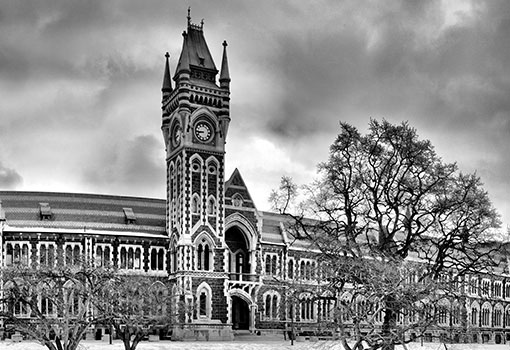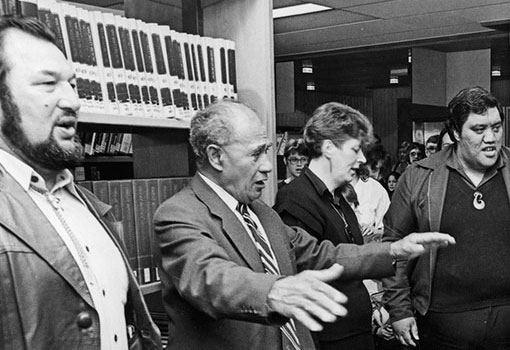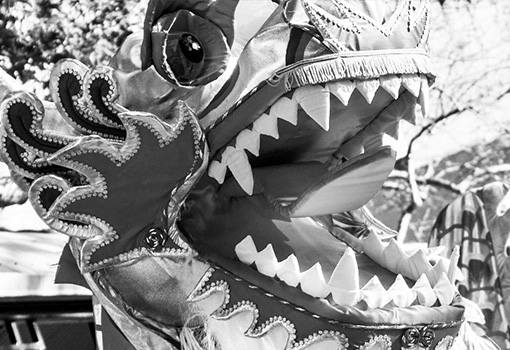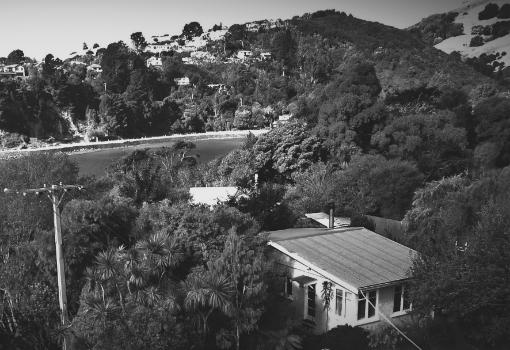Discover a new city through books
Posted: Monday Mar 01, 2021
Recommended reading lists from our UNESCO City of Literature Virtual Writers in Residence
Books open doors to real and imagined worlds. Inspired by our UNESCO City of Literature Virtual Writers in Residence, who are currently immersing themselves in the city of Norwich from a distance of hundreds (and even thousands!) of miles, we asked each of them to compile a list of recommended reading based on their home cities.
Dublin, Ireland
Selected by Lynn Buckle
Thirty-Two Words for Field by Manchán Magan (Gill, 2020)
Manchán’s as Gaeilge up-bringing in Dublin is the force behind his love of the Irish language and desire to preserve it. He delights in words and phrases from his native tongue which describe the natural world in ways no other language can. Read more
Minor Monuments by Ian Maleney (Tramp Press, 2019)
A paean to nature and to family ties in this memoir by Dublin-based author Ian Maleney. Tramp Press is one of Dublin’s smallest and most successful Dublin publishers. Read more
Nature Diary by John Boorman (Lilliput Press, 2020)
A reflection on nature and the film-maker’s final years, set in the woodlands he preserves and planted in Co Wicklow, south of Dublin. Published by Dublin press, Lilliput. Read more
A Quiet Tide by Marianne Lee (New Island Books, 2020)
A historical romance based on the true story of Ireland’s first female botanist who was sent to live in Dublin, before returning to her native West Cork. Written by Dublin resident, Marianne Lee. Read more
Thin Places by Kerri ní Dochartaigh (Canongate, 2021)
Nature as salve in this memoir of the Troubles by Kerri ní Dochartaigh, whose time spent studying at Trinity and working in Dublin is included in Thin Places. Read more
Dunedin, New Zealand
Selected by Liz Breslin
Anything by Janet Frame
Maybe start with Owls Do Cry (Virago, 2016), or Faces in the Water (Virago, 2018). Though I also love In the Memorial Room (Counterpoint, 2013) for its take on non-virtual writers residencies. Dunedin musical legend Shayne Carter quotes her in his memoir Dead People I have Known (VUP, 2019), another must-read, about growing up here in the 1970s. Janet Frame was one of the most famous residents of Seacliff Mental Asylum, just up the winding road from Ōtepoti Dunedin. Rhian Gallagher writes about some of the other residents in her this-years-Ockham-nominated poem collection, Far-Flung (Auckland University Press, 2020).
then the wind came by Iona Winter (Steel Roberts, 2018)
For other poems from the coast, read Iona Winter’s then the wind came. Also, celebrate bicultural collaboration in Iona’s second placing, with Jilly O’Brien, in this year’s Robbie Burns competition, in a poem that blends Scots and te reo Māori and English. Read more
There are so many Ōtepoti Dunedin poets who write Ōtepoti Dunedin poems – everyone I asked mentioned each other and most people mentioned Michael Steven’s Walking to Jutland Street (Otago University Press, 2018), Diane Brown’s Every now and then I have another child (Otago University Press, 2020), Carolyn McCurdie’s Bones in the Octagon (Makaro Press, 2015) and Peter Olds’ Under the Dundas Street Bridge (Steel Roberts, 2012). And Sue Wootton’s novel, Strip (Makaro Press, 2016), is as evocative of Dunedin as her poems are. Which is to say, a lot.
Landfall literary journal
Good places to check out many of the people I can’t fit in here are in Landfall, our super-long-running classy-as-anything literary journal, and through Kā Kete Wānaka o Ōtepoti Dunedin Public Libraries – they have a City of Literature collection online as well as reviews of new books in their journal, NB.
MiSTORY by Philip Temple (Fontpublishing, 2014)
Last, a not-new but ‘dystopically relevant for now’ book telling tales of Ōtepoti Dunedin and our wider Otago scapes is MiSTORY by Philip Temple, which has an entirely appropriate level of ecological and political angst for our times. Read more
Edinburgh, Scotland
Selected by Vahni Capildeo
Our Real Red Selves by Harry Giles, Marion McCready and J.L. Williams, edited by Colin Waters (Vagabond Voices, 2015)
A triptych of voices on war and motherhood, includes two Edinburgh’s most exciting poets/playwrights, Harry Josephine Giles and J.L. Williams. I’ve found the conversations between friends in Edinburgh, and the relationships between their works, to be a great part of the city’s poetic culture. It’s published in Glasgow; there’s a lot of creative traffic between the two places. Read more
I’m a Pretty Circler by Iain Morrison (Vagabond Voices, 2018)
It’s important to include debut publications. Iain Morrison, I’m a Pretty Circler, has the restless beauty, wit, and international imagination that I love about Edinburgh. Read more
A Child’s Garden of Verses by Robert Louis Stevenson (Racehorse for Young Readers, 2020)
This was a formative book for me in my childhood. People of different ages reading together, and reading aloud, is a crucial part of a living poetic culture. There are several illustrated editions available. Read more
Katabasis by Jay G. Ying (The Poetry Business, 2020)
It’s impossible to pick between the extraordinary and diverse poets currently in or associated with Edinburgh. Luckily, reading one tends to lead to reading many of the others, as there are so many good conversations happening. I read Jay G. Ying’s pamphlet pre-publication, and love its connexions between the contemporary and the deep past. Read more
Edible Gardening in Scotland (Royal Botanic Garden Edinburgh)
Finally, the poets and other writers I most enjoy are those whose thinking and vocabulary are enriched by their activities in the messy world off the page. The Botanic Garden has been a presence in my own writing since Simple Complex Shapes (Shearsman Books, 2015), and is a haven during lockdown. This is one of its many publications, and can be mulled over by all the family. It would be good if people could be helped to grow more of their own food! Read more
Aural recommendations
The University of Edinburgh Sound Archive, which includes music, song, tales, local history and everyday life.
2020 Mixtape: Writers of Colour Audio Anthology by the Scottish BAME Network.
Kraków, Poland
Selected by Marcin Wilk
Filled with history, but also witnessing modern transformations, Cracow or Kraków inspires authors not only to set the plot of their novels in this city. Many writers also publish their books there.
Mrs Mohr Goes Missing by Maryla Szymiczkowa, translated by Antonia Lloyd-Jones (Point Blank, 2019)
Something light to start with, a detective story. Cracow, at the end of the 19th century. The 38-year-old Zofia Turbotyńska, wife of a professor at Jagiellonian University, fails to satisfy the socially desired model of womanhood. No children, extremely intelligent, and full of energy. But she has just found out about two dead bodies… The book Mrs Mohr Goes Missing (translated by Antonia Lloyd-Jones) by Maryla Szymiczkowa (pseudonym of a married team: Jacek Dehnel & Piotr Tarczyński) is a delicious retro detective story. An excellent guide to an imagined Kraków. And a Polish homage to Agatha Christie. Read more
In the Garden of Memory: A Family Memoir by Joanna Olczak-Ronikier, translated by Antonia Lloyd-Jones (Phoenix, 2005)
Fans of memoirs should consider reading In the Garden of Memory: A Family Memoir (translated by Antonia Lloyd-Jones) by Joanna Olczak-Ronikier. This wonderfully written, multi-threaded story follows the lives of generations of Polish Jews throughout the twentieth century. A book about great and small tragedies, about the Holocaust, but also about the strength of family ties. And about the truth that hope sometimes is not only an empty concept.
Flights, translated by Jennifer Croft (Fitzcarraldo Editions, 2018); and Drive Your Plow Over the Bones of the Dead, translated by Antonia Lloyd-Jones (Fitzcarraldo Editions, 2019), by Olga Tokarczuk
One of the most interesting contemporary Polish authors, Olga Tokarczuk, was awarded the 2018 Nobel Prize in Literature. Movement, travel, mobility are the axes which her prose Flights (translated by Jennifer Croft) is set around. But I also recommend Drive Your Plow Over the Bones of the Dead (translated by Antonia Lloyd-Jones), not only because William Blake appears there. It’s a modern memento mori, reminding us that human beings should be responsible for their shameful treatment of other nonhuman beings.
Solaris (Faber & Faber, 2003) and Highcastle: A Remembrance, translated by Michael Kandel (The MIT Press, 2020) by Stanislaw Lem
Now something for enthusiasts of classic science fiction literature. Stanisław Lem was not only a great writer, but also a philosopher. The year 2021 is a good opportunity to pick up his books. It is the 100th anniversary of his birth. Lem’s best-known book is Solaris. This is a good choice, although the autobiographical Highcastle: A Remembrance (translated by Michael Kandel), is also worth reading.
Lovetown by Michal Witkowski, translated by W. Martin (Granta Books, 2011)
To this set I would add Michał Witkowski’s book Lovetown (translated by W. Martin), a prose ballad about queer life in 1970s and 1980s in Poland. It’s an ingeniously written, essentially overheard book. An important read for a class on the history of LGBT literature in Poland. Read more
I was only asked to pick out five titles. That is far too few. So I will quickly add two more. One is the book by the talented reporter, Witold Szabłowski, Dancing with Bears, translated by Antonia Lloyd-Jones (Penguin, 2014); a universal story about what dictatorship does to us. The other is Slight Exaggeration, a volume of essays by the Krakow poet Adam Zagajewski, and translated by translated by Clare Cavanagh (Farrar, Straus and Giroux, 2017).
Reykjavik, Iceland
Selected by Valur Gunnarsson
The Lodger by Svava Jakobsdóttir; translated by Julian Meldon D’Arcy, Dennis Auburn and Alan Boucher (University of Iceland Press, 2000)
Svava’s modernist tale, largely set in a single apartment, captures the claustrophobia of Cold War Iceland which seemed a lot more isolated than it is today. The titular lodger takes it upon himself to protect a middle-aged couple from the outside world. While this was at the time seen as a parable for the American military base, it no less addresses present-day concerns. Its style, combining the grotesquely fantastical with realism, caused a sensation upon publication. Read more
Devil’s Island by Einar Kárason, translated by Magnus Magnusson (Canongate, 2000)
When the American and British forces departed at the end of World War II, the cityscape of Reykjavik was littered with empty barracks built to house the troops. Reykjavik was quickly expanding and poor people from all over Iceland moved into the abandoned housing. Based on real characters, the story recounts their unruly life with echoes of Steinbeck, bettered in its sequel Island of Gold. The 1996 movie was the largest Icelandic film production up until then. Read more
101 Reykjavík by Hallgrímur Helgason (Simon & Schuster, 2007)
The birth of Reykjavik cool. By the 1990s, Reykjavik was starting to feel like the centre of the universe with Björk, Britpop stars, and the infamous ban on beer had finally been revoked. The protagonist spends most evenings at Kaffibarinn, also frequented by newly minted Icelander Damon Albarn. The bar is still in existence, as is a film version from 2000. The book turned the postal number 101 into a byword for hipness and is loosely based on Hamlet. Read more
Jar City by Arnaldur Indriðason (Vintage, 2009)
It was long said that crime fiction would never catch on in Iceland, with an annual murder rate close to zero. In the new century, Arnaldur raised the fictional murder rate and has been the biggest selling Icelandic writer for the last 20 years. His fourth book was turned into a film in 2006 which features an infamous scene of a man eating a sheep’s head. Meanwhile, the genetic research company of the title made a strong contribution in the fight against Covid. Read more
Moonstone by Sjón, translated by Victoria Cribb (Farrar, Straus and Giroux , 2016)
Björk’s sometime lyricist first made his name in Iceland as a surrealist poet before becoming a novelist. The story is set in the tumultuous year of 1918 when Iceland was wracked by plague, volcanic eruption, the lingering effects of World War I and one of the coldest winters in history. In the midst of all this, independence is declared. Meanwhile, the boy of the title loves going to the movies and has to hide his interest in other boys in this black and white era. Read more
https://nationalcentreforwriting.org.uk/article/discover-a-new-city-through-books/



